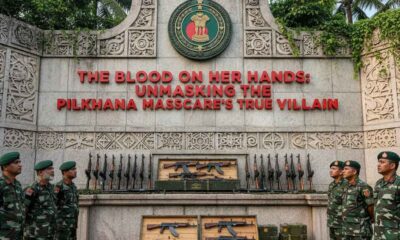Breaking
Three Lebanese Journalists Killed in Israeli Airstrike on Media Compound

Hasbaya, Lebanon, October 25, 2024 — In a tragic incident reported by witnesses, three Lebanese journalists were killed in an Israeli airstrike on a guesthouse in southeastern Lebanon, which was known to house reporters from various media organizations. The attack targeted a compound in Hasbaya, where over a dozen journalists were staying, including vehicles marked with “press.”
Deceased journalists worked for Al-Manar TV and Al Mayadeen TV. Ir respective networks have issued statements honoring their fallen colleagues, highlighting dangers faced by media professionals in conflict zones.
Lebanon’s information minister has characterized the strike as deliberate, labeling it a “war crime.” In contrast, the Israeli military stated that it targeted a Hezbollah military structure, emphasizing that its operations aim to eliminate perceived threats.
Victims were identified as camera operator Ghassan Najjar and engineer Mohamed Reda from Al Mayadeen, alongside camera operator Wissam Qassem from Hezbollah-affiliated Al-Manar. The Lebanese Ministry of Health reported that three sustained injuries from the blast.
Context of Attack
This incident is part of a broader escalation in violence between Israel and Hezbollah, which has intensified since the outbreak of hostilities on October 8, following a significant attack by Hamas on Israel. In response, Israel has conducted extensive airstrikes across Lebanon, with over 1,700 recorded in the past three weeks.
Footage from the scene displayed a heavily damaged building, with debris scattered throughout and vehicles used for broadcasts overturned. Journalists at the compound described moments of the strike, indicating they were fully aware of media presence in the area. “Everyone knew we were re. All cars were labeled as press and TV,” one reporter asserted, condemning the lack of any prior warning before the strike.
International Reaction and Ongoing Hostilities
attack has drawn sharp criticism from Lebanese officials, who argue that targeting journalists violates international law. The information minister suggested that the strike was a calculated move aimed at intimidating the media.
The incident also highlights the growing dangers faced by journalists in conflict zones. Reports indicate that at least 123 Palestinian journalists have been killed in Gaza since the beginning of the current conflict. Meanwhile, satellite imagery indicates that the scale of destruction in Lebanon is unprecedented, with significantly more damage recorded in recent weeks compared to previous conflicts.
As hostilities continue, the situation in Lebanon remains tense, with casualties rising and the potential for further escalation evident. Ongoing conflict not only threatens the safety of journalists but also exacerbates the humanitarian crisis in the region, raising concerns over press freedom and the protection of civilians in war-torn areas.










